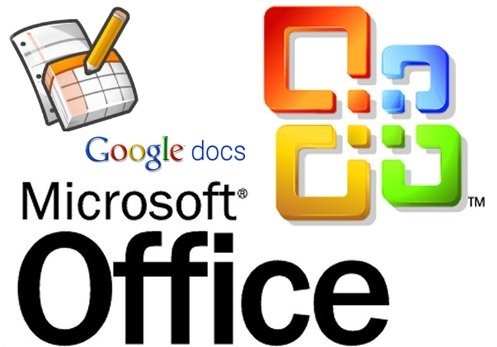In several blogs devoted to the Excel world I have known excellent professionals and now I want to express my sincere acknowledgment, starting with:
- My Acknowledgments Calendar:
Purna Duggirala and his Chandoo.org (BECOME AWESOME IN EXCEL) with whom I shared calendars templates and flags, but above all witty comments and encouragement on his blog and in his article on how to make a perpetual calendar:
2010 Calendar – Excel Template [Downloads]
David McRitchie published in My Excel Pages the largest collection of Excel functions and macros that I know:
Excel Date and Time Formatting and Functions
Chip Pearson and Pearson Software Consulting, with interesting articles about the date functions in Excel as:
Week Numbers In Excel
Héctor Miguel Orozco Díaz published in his educational Teladearaña.es:
Calendario Perpetuo (Calendar Perpetual) Excel
Martin Green's Office Tips and his free courses:
A Pop-up Calendar for Excel
Jon Wittwer founder of Vertex42 LLC dedicated to publishing high quality spreadsheets:
Free Calendars - Download free printable calendars in PDF format and calendar templates that you can customize using Excel.
G.I Nakodari founder and editor of addictivetips.com who writes about:
Excel 2010 EDATE function
Daniel Ferry is the author of the Excel Hero blog, highly recommended because it enables the calculations become amazing optical illusions:
Live Calendar Musings
Francisco Javier Marco Abián writes the blog on Hojas de Cálculo en Excel (Excel Spreadsheets) and publishes plenty of practical worksheets:
Calendarios para imprimir
I'm sure I left someone but it is because while building the perpetual calendar I did not keep their references for eternity. It's my fault ;-)
- Another interesting sites to build calendars:
Excel Calendar Templates
Plantillas de Calendarios Perpetuos
Windows Live Calendar
Google Calendar
- In acknowledgment to my visitors I'm sharing here another calendar
Or you can download a template even easier from here.
It is simpler than the proposed Perpetual Calendar, as summarized in a single spreadsheet that includes the 12 months of the year, starting any month, one selected month with anniversary dates that can be entered from any day and you could choose the color of the anniversary text.
Do you not have Excel 2007 or 2010?
Then download this version in OpenOffice Calc 3, formerly owned by Sun and now Oracle Open Office (formerly Sun StarOffice):
To calculate the week numbers I'm using the following function in Excel 2010, which is not compatible with Excel 2007:
The $E$2 cell indicates whether the week starts on Sunday (3) or Monday (4).
When you start on Monday, the argument is 21 and serves to Europe countries and other with the Gregorian Calendar.
It is not well documented, so I just wrote about this feature in MS Office forums:
Week Numbers in Excel
Implementing Week-Numbering Systems
Passing the compatibility check tells me that the sheet is compatible with Excel 2007, which is not very successful as the argument value 21 does not appear anywhere.
For Excel 2003 and 2007 and OpenOffice Calc can substitute with this calculation:
This was my last Perpetual Calendar update with the help of this forum: AyudaExcel.com that when I uploaded the calendar, one of their members told me politely that the week numbers were not right for Spain, because if not, I had been calculated as in my previous calendars:
I was thinking that had been resolved in MS Excel with the argument 2 for weeks beginning on Monday, but Microsoft has been slow to resolve until 2010 Excel version the week number calculation following the Gregorian calendar and ISO 8601 for Europe:
The week containing the first Thursday of the year is the first week of the year and is numbered as week 1.
- State of the art from calendars
With the developed calendars here could be scheduled full-day events in the local timezone, which is not far from some major software vendors like Google that warns in its Apps Status Dashboard:
Google Calendar 5/24/10
All times are shown in your local timezone unless otherwise noted.
When it comes to events schedules, this approach is not correct and should be required that the start and end events can be scheduled in different time zones, what some bloggers are denouncing in the relevant Google Calendar forums:
Foro de Ayuda > Calendar > Foro > Zonas Horarias
Help forum > Calendar > Coffee Shop > New in Calendar: Swap time zones
Help forum > Calendar > Feature requests > Per event time zone settings
Help forum > Calendar > Calendar not loading > Easter missing from Christian and Dutch calendar
The latter concerns to there aren't Easter days in the Google Calendar. Does this mean that their engineers have forgotten to do calculations (Computus in Latin)?
In short, in all these articles I tried to show that a proposed user interface can be attacked in various ways, but you should always take into account the recipient of the application and its changing needs, so development will not be terminated while there are users to meet, which makes software development is always a process of continuous improvement in time ...
Blogger lies when he says that creating a blog is easy and only takes a minute. Provide content to a blog or creating a high requirements spreadsheet, some days of dedication are needed, as any expert in Excel or Blogs will tell you. I have dedicated this month to this project that help me to stay active and have in this site some things I cannot find on other sites and that can serve other users like me. Next month I'm going to publish more projects headed to experienced users.
PD: Print a dodecahedron calendar form from this page: 12 sided calendar
Traducción al español aquí.



























